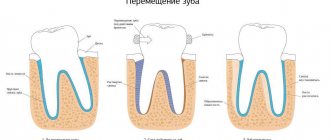What is local anesthesia
The main distinguishing feature of local anesthesia is that the person remains conscious during its effect. This type of anesthesia acts on receptors that are located below chest level. In addition to complete anesthesia, local anesthesia eliminates other tactile sensations, including temperature, pressure on tissue, or stretching.
Local anesthesia is possible in the following areas:
- on the surface of the mucous membranes of various organs - trachea, larynx, bladder, bronchi, and so on;
- in the thickness of tissue - bone, muscle or soft;
- in the direction of the nerve root extending beyond the boundaries of the spinal cord membrane.
- in impulse-conducting nerve cells of the spinal cord.
The main goal of local anesthesia is to block the occurrence of impulses and their transmission while maintaining consciousness.
Leading specialists in the field of otolaryngology:
Volkov Alexander Grigorievich
Volkov Alexander Grigorievich, Professor, Doctor of Medical Sciences, Head of the Department of Otorhinolaryngology, Rostov State Medical University, Honored Doctor of the Russian Federation, I Full Member of the Russian Academy of Natural Sciences, Member of the European Society of Rhinologists.
Read more about the doctor
Book a consultation with a specialist
Boyko Natalya Vladimirovna
Boyko Natalya Vladimirovna , Professor, Doctor of Medical Sciences.
Read more about the doctor
Book a consultation with a specialist
Zolotova Tatyana Viktorovna
Tatyana Viktorovna Zolotova, Professor of the Department of Otorhinolaryngology, Rostov State Medical University, Doctor of Medical Sciences, Corresponding Member of the Russian Academy of Economics, Best Inventor of the Don (2003), Awarded: V. Vernadsky Medal (2006), A. Nobel Medal for Merit in the Development of Invention (2007) .).
Read more about the doctor...
Book a consultation with a specialist
Karyuk Yuri Alekseevich
Karyuk Yuri Alekseevich - otolaryngologist (ENT) of the highest qualification category, candidate of medical sciences
Read more about the doctor...
Book a consultation with a specialist
Page editor: Kutenko Vladimir Sergeevich
Tympanoplasty - Prof. Preobrazhensky Yuri Vladimirovich
Types of local anesthesia
In medicine, there are the following types of anesthesia, differing in some characteristics and scope of application:
- terminal;
- infiltration;
- regional;
- intravascular.
Each type has a list of indications and contraindications that must be taken into account when conducting them.
Terminal anesthesia
This type is also known as topical or surface anesthesia. The main areas of application are dentistry, gastroenterology and proctology. Terminal local anesthesia (anesthesia) differs from other types in the method of administration: anesthetics in the form of a spray, gel or ointment are applied to the surface of the skin or mucous membranes.
In proctology, local anesthetic gels and sprays (Katetdzhel, Lidochlor, Lidocaine, etc.) are used during proctological examinations and diagnostic procedures: rectal examination, anoscopy, sigmoidoscopy. The examination becomes virtually painless. Also, local anesthesia in proctologists is used during certain medical procedures: latex ligation of hemorrhoids, sclerotherapy of hemorrhoids, infrared coagulation of internal hemorrhoids, as well as biopsy from the rectum.
Infiltration anesthesia
It is used in dentistry and surgery, and involves the introduction of special solutions into soft tissues. The result of the procedure, in addition to a pronounced anesthetic effect, is an increase in pressure in the tissues, and, as a result, a narrowing of the blood vessels in them.
Regional anesthesia
This type involves the introduction of an anesthetic near large nerve fibers and their plexuses, resulting in pain relief in localized areas. It is divided into the following types of local anesthesia:
- conduction, with the introduction of drugs near the trunk of a peripheral nerve or nerve plexus;
- spinal, with the introduction of drugs into the space between the membranes of the spinal cord and “turns off” pain receptors over a large area of the body;
- epidural anesthesia, with the introduction of drugs into the space between the spinal cord and the walls of the spinal canal through a special catheter.
Intravascular anesthesia
It is used mainly for surgical interventions on the extremities. Administration of drugs is possible only with the application of a hemostatic tourniquet. The anesthetic is injected into a blood vessel located near the nerve responsible for the sensitivity of the limb in the area below the injection site.
In recent years, due to the emergence of more effective local anesthetics, the number of proctological operations performed using local anesthetics has increased significantly. In addition, our specialists have developed a method of combined anesthesia - a combination of local anesthesia and intravenous anesthesia. This significantly reduces the toxicity of general anesthesia and reduces the severity of pain in the postoperative period, which allows the patient to recover faster after surgery.
Most often, when performing proctological operations (hemorrhoidectomy, excision of anal fissures, small pararectal fistulas, rectal polyps), pararectal blockade, as well as spinal anesthesia, are used.
Possible complications after tooth extraction
After simple extraction of any tooth, complications occur quite rarely, provided that the doctor’s recommendations are followed.
The main thing is that the patient needs to remember that if the blood clot remains in the socket until healing, then infection and suppuration of the wound will not occur, and within two weeks a healthy gum mucosa will appear at the site of the clot. In case of loss of a blood clot, the unprotected wound surface of the socket is exposed to pathogenic microflora of the oral cavity; the accumulation of pathogenic bacteria provokes the development of an inflammatory process - alveolitis.
Infection of the alveolar socket is the most common complication after tooth extraction. In this case, the infection penetrates and affects the soft tissues surrounding the tooth. If an infectious infection of the hole is accompanied by the presence of throbbing pain and suppuration, this signals the development of an abscess. When alveolitis is advanced, there is a danger of the inflammatory process spreading to the jaw bone - the development of osteomyelitis.
Complex (traumatic) tooth extraction has more prerequisites for the development of inflammatory complications. If after removal there remains a piece of tooth infected with caries, curettage of the hole and extraction of the tooth fragment will be required.
Also, after a complex removal, there is a possibility of delayed bleeding, several hours after the operation. The causes of such bleeding can be high blood pressure, severe stress, the body's reaction to certain medications, excessive rinsing and irritation of the wound with hot food.
In rare cases, the nerve trunks of the lower jaw may be damaged during surgery. Simple or complex tooth extraction is an unpleasant operation, but there is no point in postponing a visit to the doctor if the tooth causes discomfort and pain, most likely its removal is only a matter of time. Modern ultrasonic removal of teeth on the upper or lower jaw will save you from unwanted consequences and many troubles associated with the onset of complications after surgery.
Incorrect position of the wisdom tooth in the row
When a wisdom tooth takes an incorrect position during growth or is partially erupted, pericoronitis (inflammation of the tissues around the tooth) often develops, this is due to the fact that part of the tooth remains in the gum, and the formed periodontal pocket covering the tooth is difficult to clean from food debris , which accumulate and create an environment favorable for the development of pathogenic microflora.
A common disease of wisdom teeth is caries, since food particles remain in the interdental space with the adjacent tooth due to difficult access for cleaning, and plaque forms on the teeth. In this case, carious destruction spreads to the adjacent second molar.
Doctors recommend removing wisdom teeth if they have partially erupted or are incorrectly positioned in the dentition as early as possible, before complications occur and before their roots are fully formed.
Removal of impacted wisdom tooth
Defects in the development of third molars are caused by injury and destruction of the wisdom tooth itself and, if it puts pressure on the adjacent tooth, it damages the roots and surrounding tissues. This situation is observed due to improper growth, damage by caries, often inaccessible to treatment, surfaces of the wisdom tooth with the formation of a focus of infectious inflammation. These complications diagnosed by a doctor are absolute indications for tooth extraction.
This includes the removal of an impacted (unerupted) figure eight, when the tooth failed to erupt and remained embedded in the gum or bone.
Immersion may be tissue if the tooth has passed through the bone but is unable to penetrate the gum tissue, or bone if the tooth remains completely in the jawbone.
Follicular cyst of wisdom tooth
The formation of a follicular cyst can be asymptomatic, but the appearance of pain and high temperature already signals its active development and the presence of an inflammatory process. An increase in the size of a follicular cyst is dangerous due to the thinning of the jawbone tissue due to its replacement with a new growth.
Also, impacted and semi-impacted (partially erupted) figure eights are indicated for removal, since remaining covered by a large layer of dense mucous membrane, they put pressure on the surrounding soft tissues.
Prolonged injury to the mucous membrane from the inside contributes to the formation of pathogenic microflora. The appearance of redness, pain, and swelling indicates the occurrence of an inflammatory process, pericoronitis.
Simple tooth extraction
Simple tooth extraction, including wisdom teeth, is in most cases permissible in the upper jaw, which has a looser and softer structure and allows the tooth to be successfully grasped with forceps. If the tooth has fused roots and can be rocked, then its removal will not be difficult.
Simple removal of a wisdom tooth in the upper jaw can be done with little resistance.
Complex tooth extraction
The anatomy of the lower jaw itself prevents not only the eruption of third molars without complications, but also complicates the process of wisdom tooth extraction.
Difficult tooth extraction from below is due to the fact that the mandibular bone has a denser and stronger structure, and the roots of such teeth in the lower jaw are often curved and may have several processes, which complicates their smooth removal.
Bent or damaged roots of the eighth tooth below or above and its incorrect location, including complete or partial immersion in bone tissue, create a serious obstacle to its extraction. This situation is non-standard and requires labor-intensive efforts to remove wisdom teeth in difficult conditions. To provide quick access to the area where the tooth is located, the surgeon cuts the gum and periosteum.
During such an operation, it is possible to drill out a certain amount of bone covering the tooth or extract the problematic tooth in parts.
Ultrasound removal of wisdom teeth
At the Apex-D Dental Implantation Clinic, wisdom teeth are removed using an ultrasonic instrument.
Ultrasound surgery allows the removal of wisdom teeth, especially in complex cases, in the most atraumatic way.
The use of ultrasound in dental surgery makes it possible to perform surgery in extremely hard-to-reach places, minimize trauma to the soft and bone tissues surrounding the tooth, reduce the likelihood of complications after surgery and speed up the healing of the wound surface of the socket after tooth extraction.
Questions and answers on this topic: Tooth extraction, wisdom teeth removal
You can make an appointment at Apex-D Dentistry by calling the administrator at +7 and +7, or filling out an electronic form (the administrator will contact you at the specified phone number and agree on the date and time of the appointment).
Preparations for local anesthesia
The following drugs are used to provide local anesthesia:
- Novocaine;
- Dicaine;
- Lidocaine;
- Trimecaine;
- Bupivacaine;
- Naropin;
- Ultracaine.
Each of them is effective when carrying out a certain type of anesthesia. Thus, Novocaine Dicaine and Lidocaine are more often used when it is necessary to anesthetize the skin and mucous membranes, while more powerful drugs, such as Naropin and Bupivacaine, are used for spinal and epidural anesthesia.
Indications for local anesthesia
All methods of local anesthesia have the same list of indications, and are used if necessary to numb a specific area for a short time (up to an hour and a half). It is recommended to use them:
- for performing surgical non-abdominal interventions or small abdominal operations, the duration of which does not exceed 60-90 minutes;
- with intolerance to general anesthesia;
- if the patient is in a weakened state;
- if it is necessary to carry out diagnostic procedures against the background of severe pain;
- if the patient refuses general anesthesia;
- in elderly patients;
- when general anesthesia cannot be used.
Advantages and disadvantages of the technique
The main advantages of topical anesthesia:
- Performance. Painkillers used for topical anesthesia have an immediate effect.
- High efficiency. The treated surface loses sensitivity in 99% of cases.
- Safety. An experienced dentist will perform the procedure in such a way that no complications will arise.
The disadvantages of topical anesthesia are mainly related to the specifics of the procedure:
- The substance penetrates shallowly. Its area of influence is limited to the upper layers of the epithelium and tooth enamel.
- It is quite difficult to control the exact dosage of the drug.
- Small concentrations of anesthetic enter the blood.
- Painkillers have a vasodilating effect. Therefore, after their action stops, many patients' gums begin to bleed.
- Quite a short period of validity. The maximum duration of the anesthetic effect is 25-30 minutes. This fact limits the scope of application of topical anesthesia. It is impossible to cure deep caries using this delicate technique.
Possible complications when using local anesthesia
The use of local anesthetics carries certain risks, which include several types of complications:
- damage to the central nervous system and conduction system of the heart;
- damage to spinal tissue, nerve roots and spinal cord membranes;
- suppuration at the site of anesthetic injection;
- allergic reactions.
In most cases, the listed problems arise when the anesthesia technique is violated, or when the anamnesis is not collected completely.







